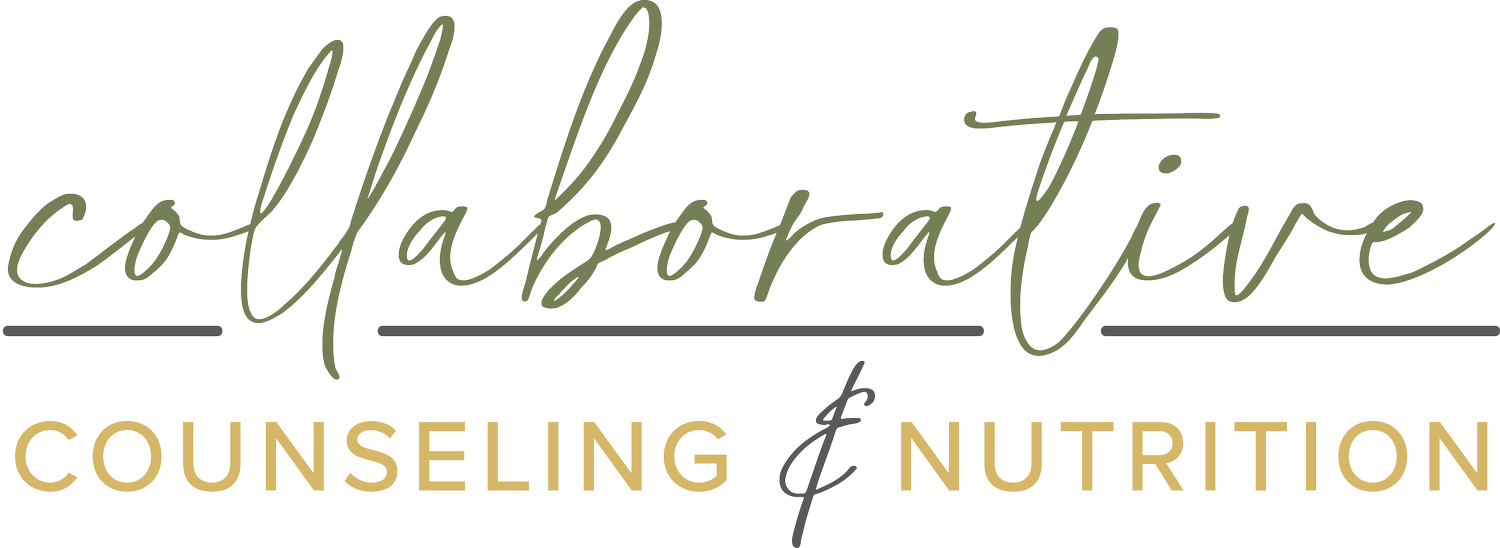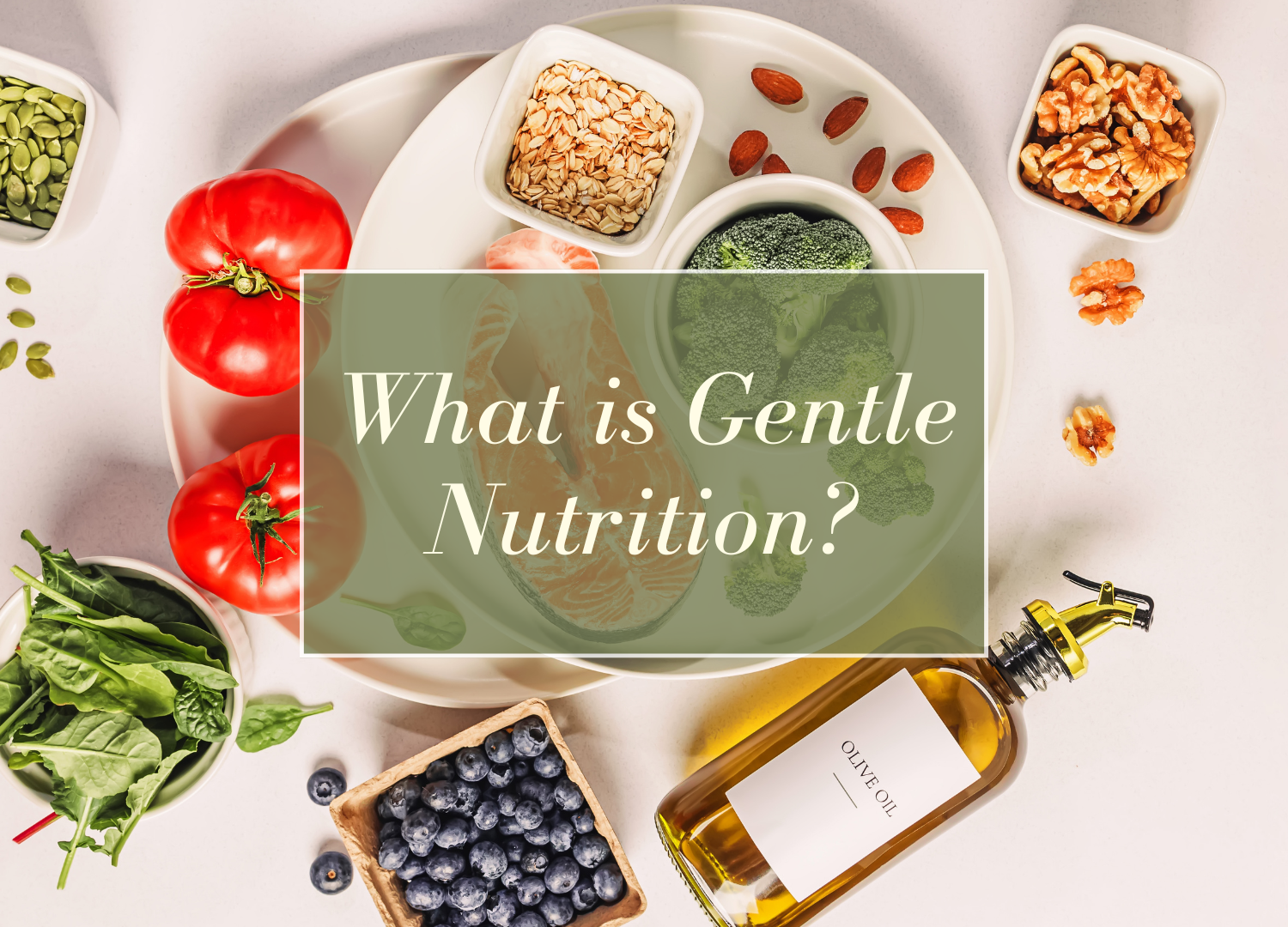What is Gentle Nutrition? How to Honor Your Health and Nourish Your Body
When you think of the word “nutrition”, what comes up? Many of us have been trained to believe that caring about food means micromanaging it. But most of the time, that’s diet culture or disordered eating talking (not your body, and definitely not the science!). Today, we are hearing from one of our favorite dietitians, Allison Tucker, who helps us understand what exactly Gentle Nutrition means! Take it away, Allison!
A lot of us have spent years making food decisions based on rules, numbers, and outside expectations rather than what our bodies are actually telling us. So chances are, you already know a good deal about nutrition. What’s usually missing isn’t more information - it’s a different relationship with food.
So, What is Gentle Nutrition?
According to Intuitive Eating authors Evelyn Tribole and Elyse Resch, it means making food choices that honor both your health and your taste buds, while making you feel good physically and emotionally. For those of you familiar with the principles of Intuitive Eating, you may notice this is the final principle, and that’s for good reason! Healing your relationship with food comes first. Only then can nutrition feel supportive instead of stressful.
That’s why we start with the foundations: rebuilding trust, reconnecting with your body, and learning to notice what actually feels good. Once that groundwork is in place, we can bring in gentle nutrition in a way that supports, not overrides, your lived experience.
Every Meal Will Look Different - And That’s a Good Thing
There’s no one “perfect” plate. Some meals might be packed with protein, others higher in fiber. Some takeout, some homemade. One day you might crave something crunchy and fresh, the next something warm and soft. Meals will vary in texture, temperature, size, and timing. Moving away from black-and-white labels like “good” or “bad,” allows space for us to actually notice how different foods support us in different ways.
It Involves Trial and Error
A big part of intuitive eating is learning that some meals will work better than others, and that’s okay. One meal might leave you feeling energized one day and not so much on another. That doesn’t mean you messed up; it just means your needs change, and your awareness is growing. Instead of aiming for “perfect,” we practice checking in: Do I feel full? Satisfied? Do I need a little more today?
It’s not about rigidly sticking to a plan; it’s about responding to your body in real time.
So, What Does Gentle Nutrition Actually Look Like?
Zooming Out: It’s the Pattern, Not the Plate: One meal or snack isn’t going to make or break your health. Nutrition is about how you eat over time - not the frozen pizza you had last night or the salad you had today. Flexibility is key.
Adding More, Not Less: Instead of thinking, “What should I cut out?” ask, “What can I add to feel more nourished and satisfied?” That might look like adding protein to your pasta or oatmeal, tossing in avocado, nuts, or olive oil to a salad for fullness, or adding a side of fruit, roasted veggies, or yummy bread to round out your plate at dinnertime.
Eating Consistently: Hunger is not a problem to fix; it’s a signal to respond to. A helpful rhythm for most folks is eating every 3-4 hours. Don’t skip meals or “save up for later” - that’s a recipe for feeling chaotic around food. Keeping a steady eating rhythm supports energy, mood, and even blood sugar. Remember that restriction usually backfires - nourishment doesn’t!
Carbs Are Not the Villain: Repeat after me: Your body needs carbs! Especially your brain. Especially in recovery. Especially if you’re active. Aim to make half your grains whole, complex carbs (when your body is ready – it’s likely you may need more refined, readily available carbohydrates in the early stages of recovery!)
Satisfaction Is Still the Goal: If the nutrition advice you’re following leads you to choke down joyless meals, it’s probably not sustainable. Flavor, texture, temperature, and pleasure all matter!
To Summarize:
Eat every 3–4 hours to support hunger cues and energy
Add a mix of carbs, protein, and fat to your meals and snacks
Include whole grains, fruits, veggies, nuts, and seeds when you can
Vary your proteins: eggs, meat, dairy, fish, beans, tofu, etc.
Make meals satisfying: season, dress, or pair things you actually enjoy
Zoom out: it’s okay if some days are more balanced than others; patterns are what matter
Notice how food makes you feel: not from a place of judgment, but curiosity
Gentle Nutrition is Not About Doing it “Right”
It’s not about following strict food rules, ignoring your cravings, or choosing the “healthiest” option at the expense of pleasure or satisfaction. It’s not about judging yourself for what you ate, forcing yourself to eat what you think you should, or falling into all-or-nothing thinking. It’s about curiosity, flexibility, and giving yourself full permission to eat in ways that nourish both your body. That’s the real goal here: eating in a way that feels kind to your body - not punishing.
What foods support your energy? Your digestion? Your mood? Your joy?
If you’re still sorting that out, you’re not alone, and the dietitians, therapists, and recovery coaches at Collaborative Counseling & Nutrition are here to help! Reach out today!
Resources Used:
Academy of Nutrition and Dietetics (2023). Position Paper: Nutrition and Health Equity
Harrison, C. (2019). Anti-diet: Reclaim your time, money, well-being, and happiness through intuitive eating. Little, Brown Spark.
Mozaffarian, D. et al. (2016). "Changes in Diet and Lifestyle and Long-Term Weight Gain in Women and Men." NEJM, 364(25), 2392–2404
Tribole, E., & Resch, E. (2020). Intuitive eating: A revolutionary anti-diet approach (4th ed.). St. Martin’s Essentials.


